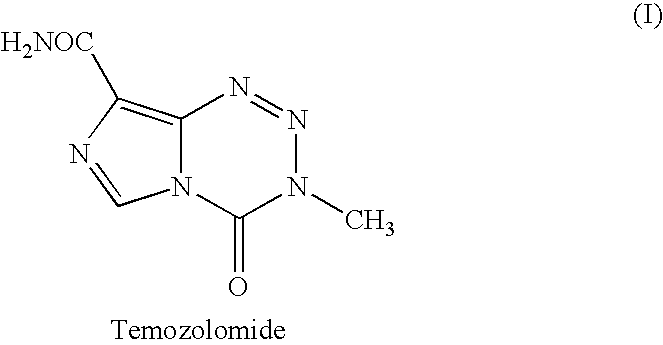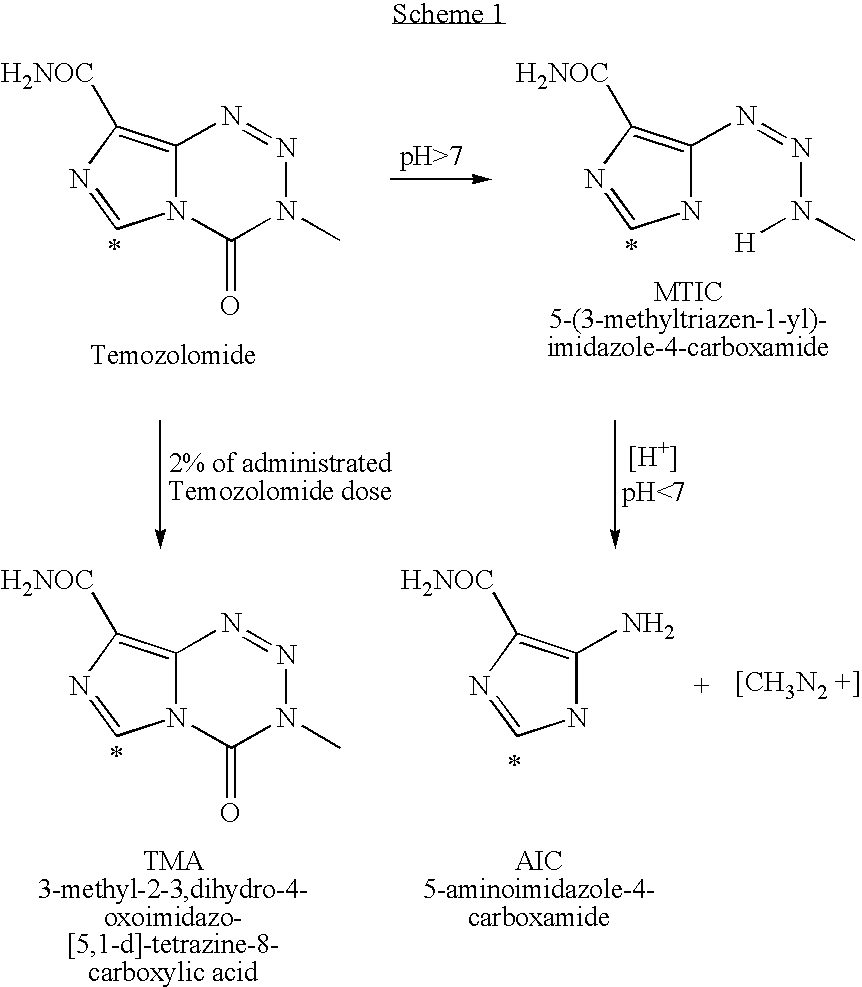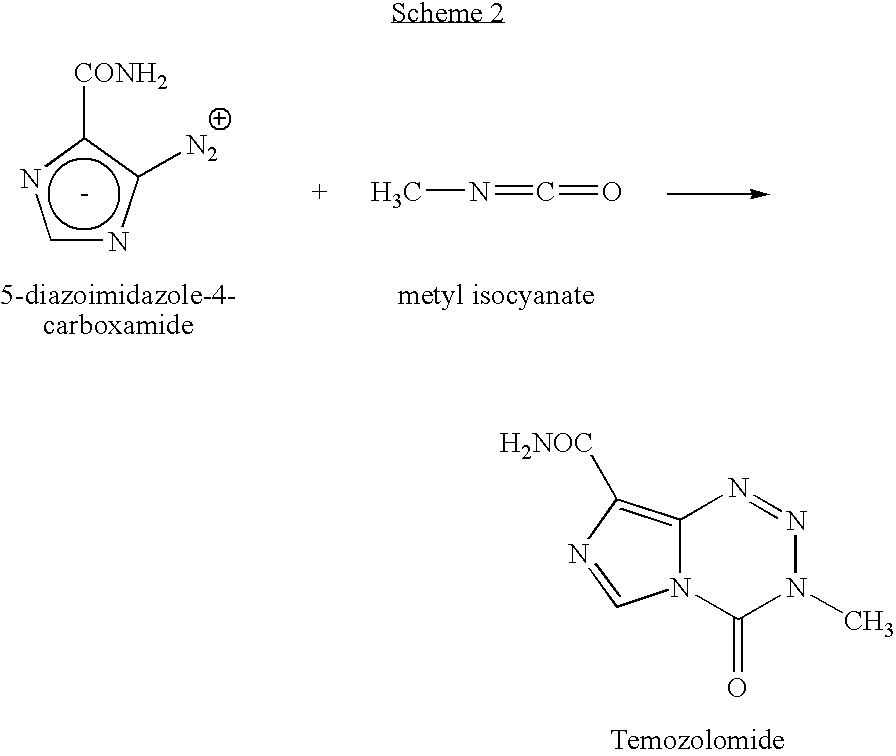Process for preparing temozolomide
a technology of temozolomide and temozolomide base, which is applied in the direction of anion exchangers, cation exchangers, organic active ingredients, etc., can solve the problems of low yield of temozolomide hydrochloride (65%), inapplicability, and inability to treat with a base, etc., to achieve high yield, high quality and yield, and simple process. , the effect of high yield
- Summary
- Abstract
- Description
- Claims
- Application Information
AI Technical Summary
Benefits of technology
Problems solved by technology
Method used
Image
Examples
example 1
[0099]A 250 ml reaction vessel equipped with a magnetic stirrer and a reflux condenser was charged with 8-cyano-3-methyl-[3H]-imidazo-[5,1-d]-tetrazin-4-one (10 grams, 0.0568 mol) and hydrochloric acid (36.5-38%, 50 ml). The reaction mixture was heated to 32-35° C. and stirring was maintained at this temperature for about 3 hours. A sample was withdrawn and analyzed by HPLC to verify that the high conversion was received. (If the content of the starting material 8-cyano-3-methyl-[3H]-imidazo-[5,1-d]-tetrazin-4-one is more than 2.5% by area according to HPLC, the stirring may be continued for additional one hour).
[0100]The reaction mixture was then cooled to 20° C. and 50 ml of acetone were added drop-wise while maintaining the temperature at 20° C. Stirring was continued for 15-30 minutes. The precipitated white crystals were washed with cold acetone (20 ml) and dried at 40° C. in vacuum to obtain 11.7 grams (0.0507 mol) of Temozolomide hydrochloride (89.3% yield). Purity (by HPLC):...
example 2
[0101]A 500 ml reaction vessel equipped with a magnetic stirrer and a reflux condenser was charged with Temozolomide hydrochloride (11.7 grams, 0.0507 mol), acetonitrile (79 ml), acetic acid (2.5 ml) and water (96.5 ml). The reaction mixture was heated to 60-63° C. and stirring was maintained at this temperature for about 10 minutes. The reaction mixture was filtered at this temperature and then cooled to 5° C. for about half an hour to enable crystallization. The crystals thus obtained were collected and washed with water (2×20 ml) and cold acetone (20 ml). The crystals were dried at 40° C. in vacuum to obtain 8.54 grams (0.044 mol) of free Temozolomide base (86.7% yield). Purity (by HPLC): 99.96%.
example 3
[0102]A 500 ml reaction vessel equipped with a magnetic stirrer and a reflux condenser was charged with Temozolomide hydrochloride (7.2 gram, 0.031 mol), acetone (85 ml), acetic acid (1.8 ml) and water (90 ml). The reaction mixture was heated to reflux and stirring was maintained at this temperature for about 10 minutes. The reaction mixture was filtered at elevated temperature and then cooled to 5° C. for about half an hour to enable crystallization. The crystals thus obtained were collected and washed with water (2×20 ml) and cold acetone (20 ml). The crystals were dried at 40° C. in vacuum to obtain 5.3 grams (0.027 mol) of free Temozolomide base (88% yield).
PUM
| Property | Measurement | Unit |
|---|---|---|
| temperature | aaaaa | aaaaa |
| temperature | aaaaa | aaaaa |
| pH | aaaaa | aaaaa |
Abstract
Description
Claims
Application Information
 Login to View More
Login to View More - R&D
- Intellectual Property
- Life Sciences
- Materials
- Tech Scout
- Unparalleled Data Quality
- Higher Quality Content
- 60% Fewer Hallucinations
Browse by: Latest US Patents, China's latest patents, Technical Efficacy Thesaurus, Application Domain, Technology Topic, Popular Technical Reports.
© 2025 PatSnap. All rights reserved.Legal|Privacy policy|Modern Slavery Act Transparency Statement|Sitemap|About US| Contact US: help@patsnap.com



